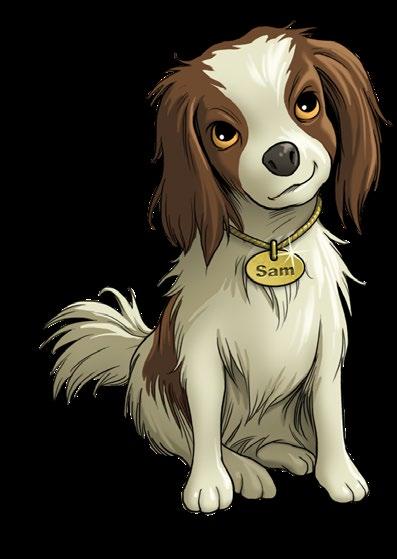Phonic Books Catch-up Series
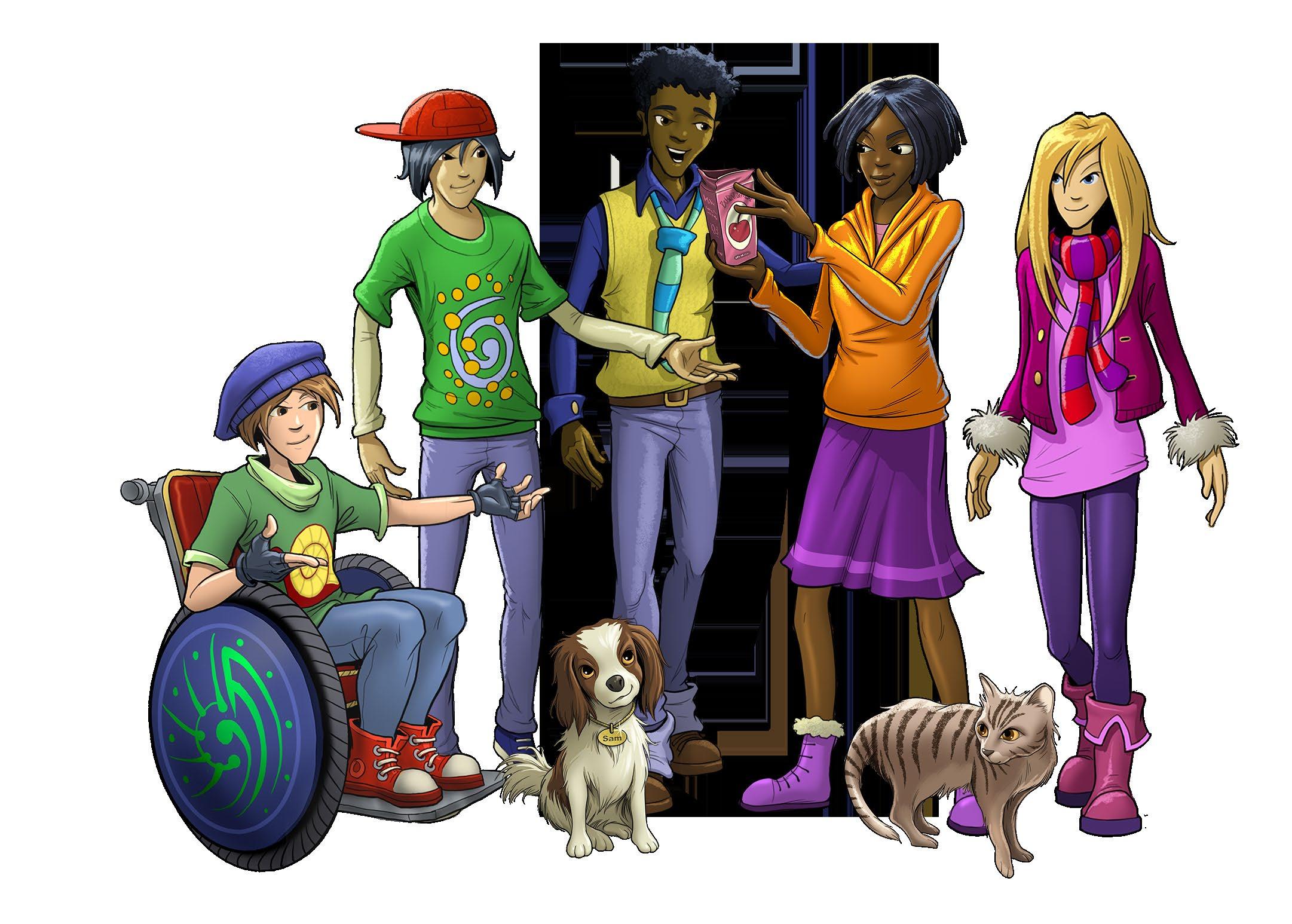
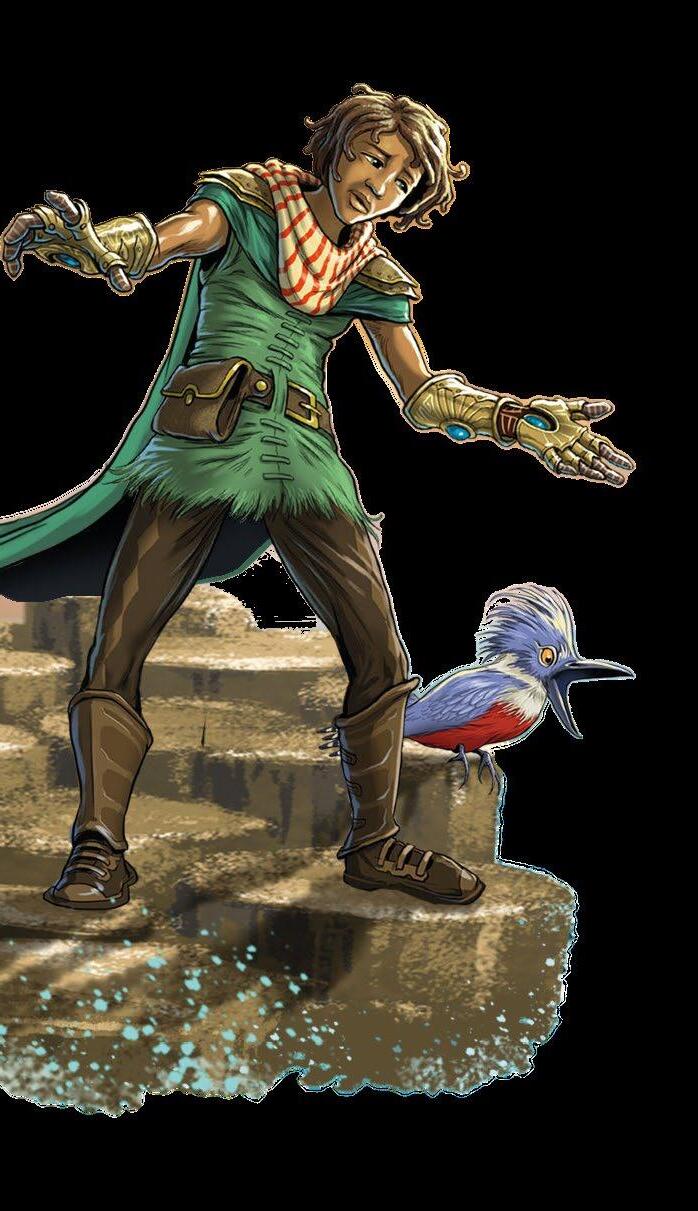
Age-appropriate, high-interest, decodable phonics books and activity books for older readers. Exciting stories and instantly engaging illustrations will interest even the most reluctant of older readers.

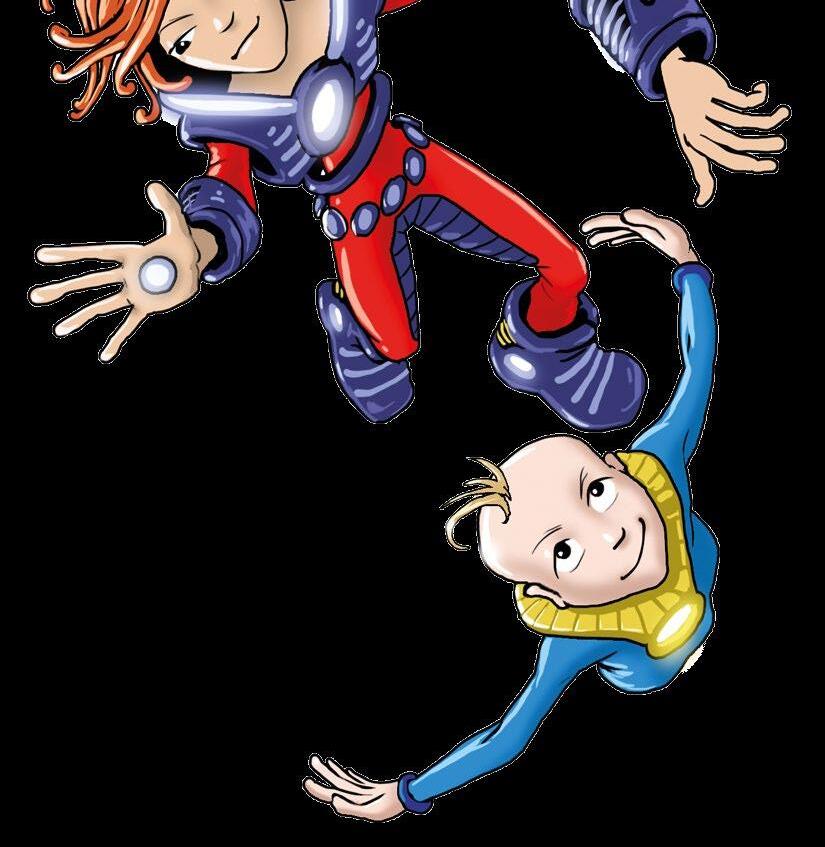



Age-appropriate, high-interest, decodable phonics books and activity books for older readers. Exciting stories and instantly engaging illustrations will interest even the most reluctant of older readers.


Decodable books should be integral to any phonics reading programme or approach and provide a platform to practise and transfer the skills learned in explicit phonics instruction. Our books are highly decodable with gradual introduction of high-frequency words.
All of our books follow a steady, cumulative progression and can be used with any phonics reading programme. As children progress, we introduce new phonic knowledge and skills while reinforcing those skills learned previously.
Children need to practise and consolidate what they have learned at each stage. How much practice is needed varies from child to child. The breadth of our range allows for this with multiple books at each stage to ensure sufficient reading practice.
Step 1 Match and teach
Before reading, match the phonic progression to your programme and teach the target sound(s) within each book. Ensure the child knows both the sounds and their corresponding letter(s) and how to blend them into words.
Step 2 Read decodable books
Children read the decodable books with the target phonics introduced in each book.
Step 3 Consolidate knowledge and skills
• Play the games in each book
• Read more books at each level
• Complete the activities in the Reading and Writing Activities Book for further practice

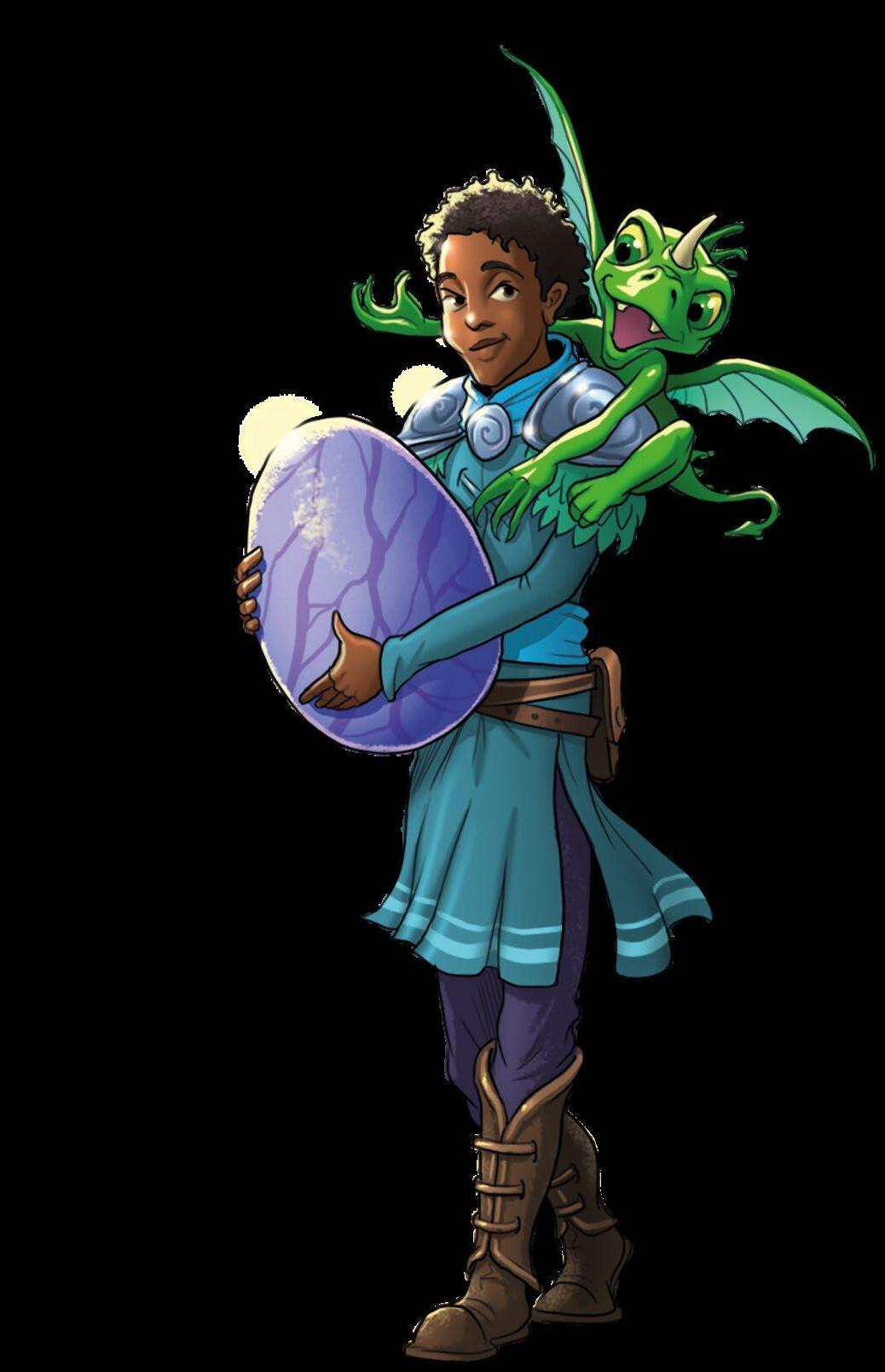

The purpose of these series of books is to fill in the missing gaps in phonic skills and knowledge that prevent pupils from making progress and becoming fluent readers.
They are designed to appeal to older pupils who may have already experienced reading failure. Many of these pupils experience loss of confidence and low self-esteem.
Special features have been included to engage but also facilitate access to text and develop confident reading strategies:

Age-appropriate illustrations and storylines that engage and encourage the pupil to read further
Reading practice page which prepares the pupil for reading the text
Vocabulary page to develop receptive and expressive language
Highly structured phonic progression
Chapter books
Reader-friendly layout
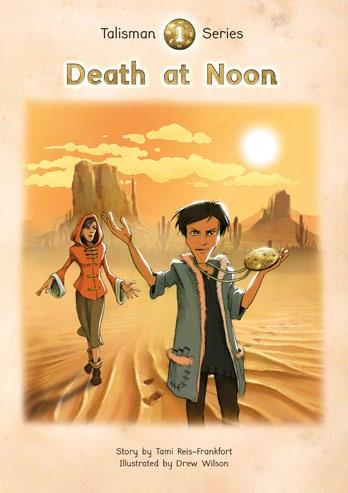
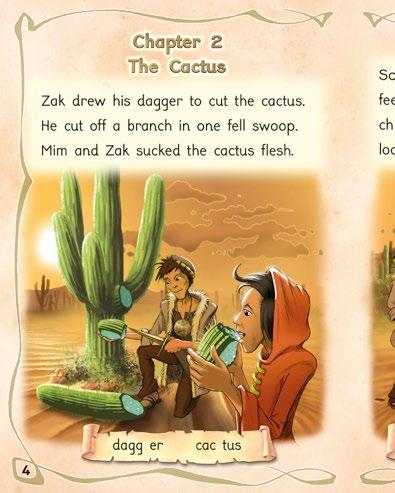

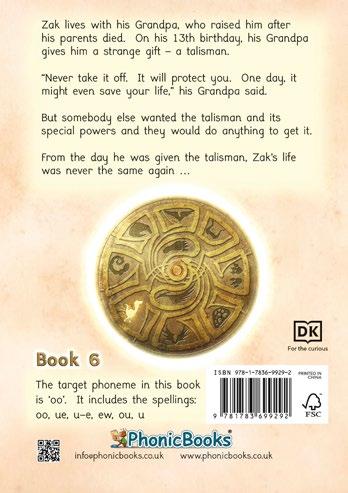
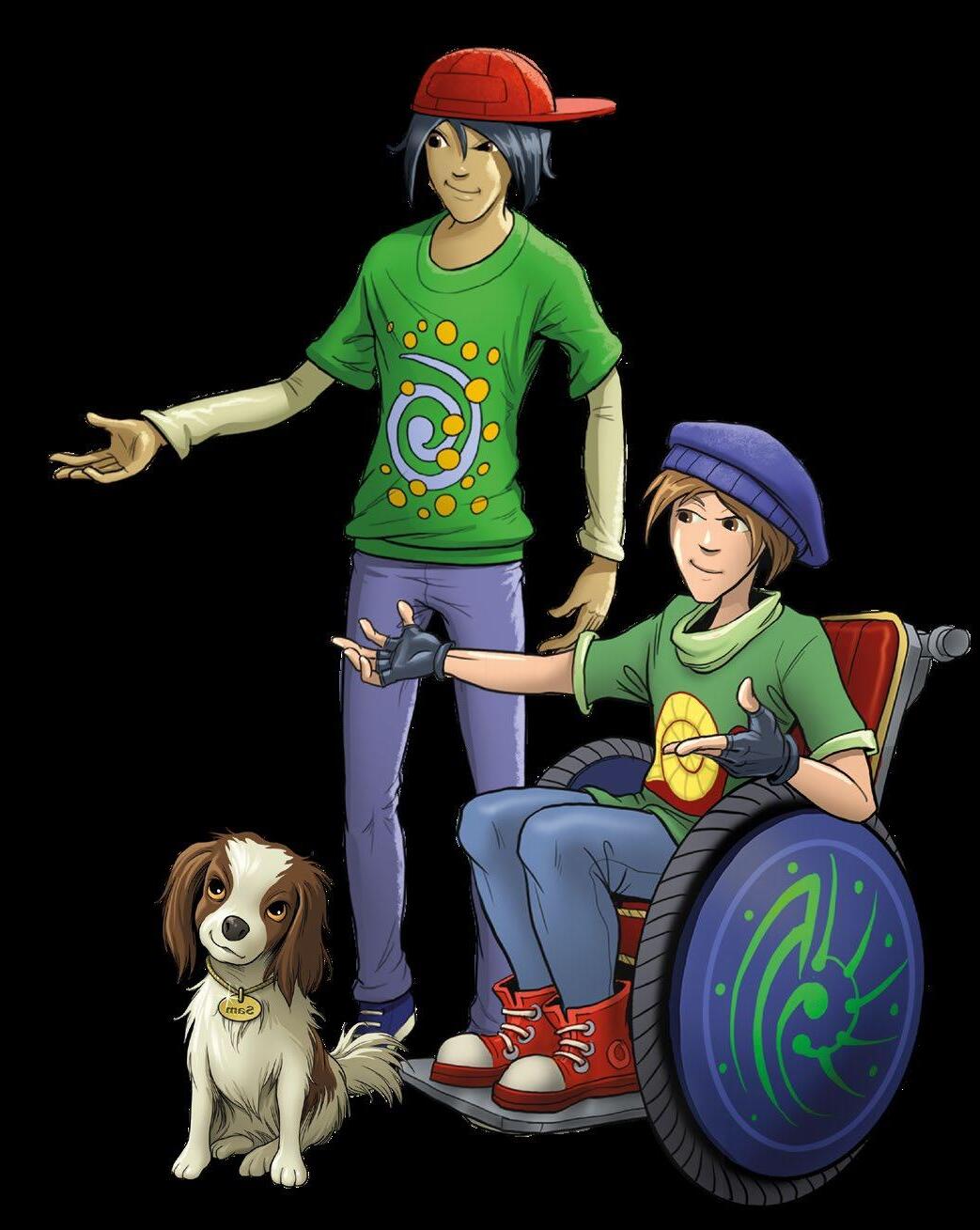
These books are integral to the reading programme, as they include teaching and practice activities to support the learner.
Some activities precede the books, such as word building, word reading and spelling.
Other activities are directly linked to the decodable readers and are designed to develop reading fluency and accuracy, vocabulary, comprehension and writing.
This sampler contains the first book in the That Dog! series and the accompanying activities from the Reading and Writing Activities Book. That Dog! reading series and activities are a reading resource for catch-up pupils aged 8–14 who are beginner readers. The reading series and activities will motivate older students to develop their literacy skills through reading decodable stories about the adventures of a boy and the stray dog he adopts.
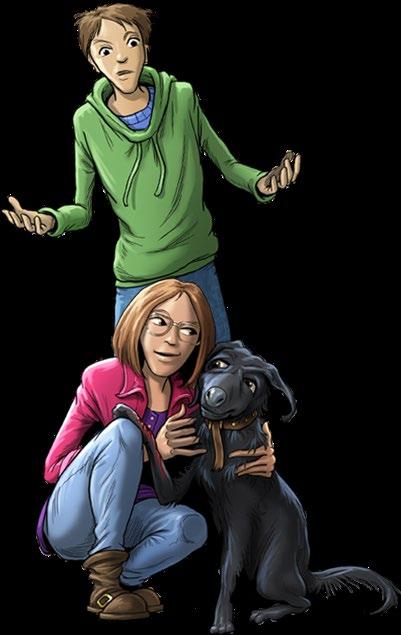
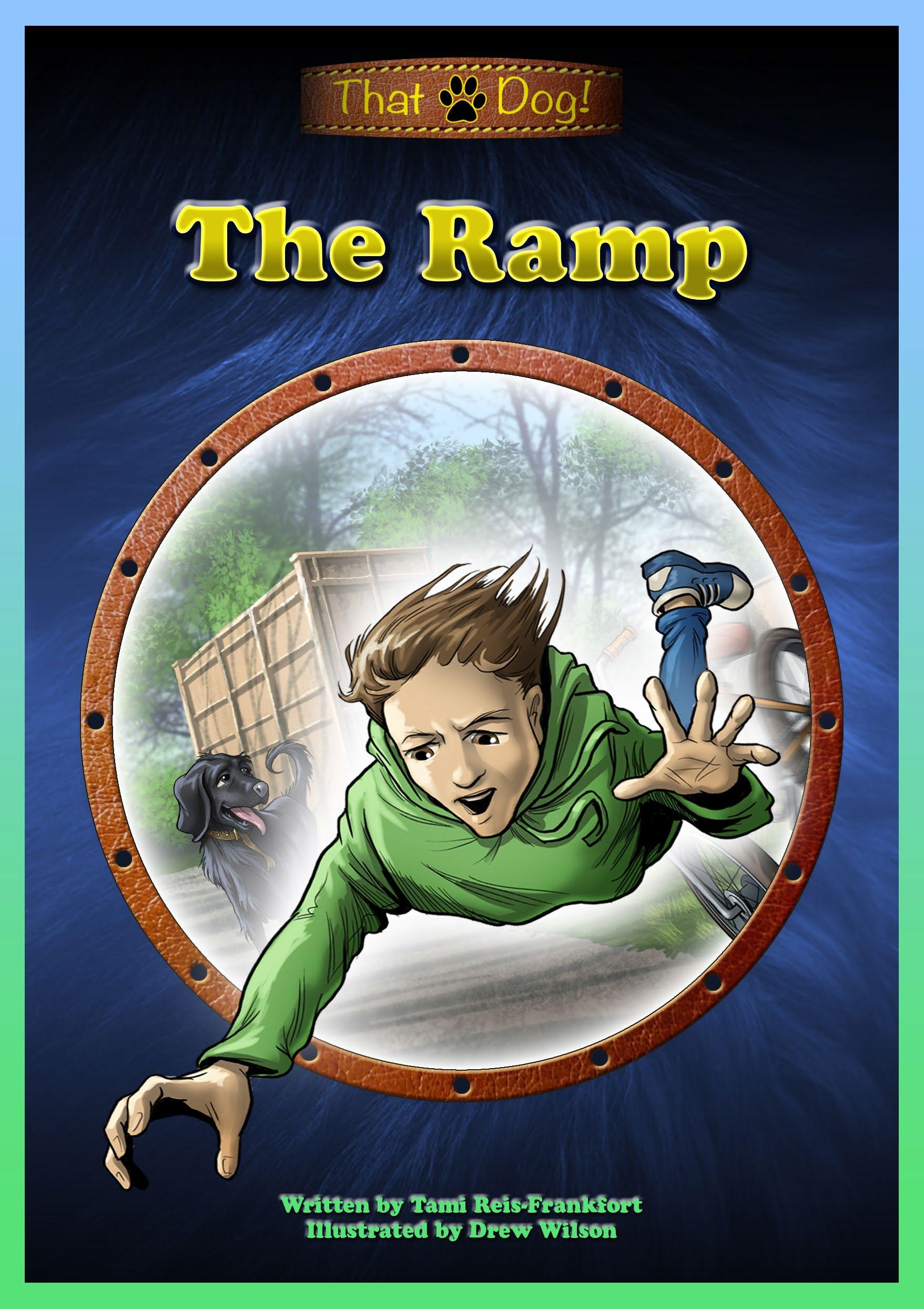
This edition published in 2023
First published in Great Britain in 2018 by Phonic Books, an imprint of Dorling Kindersley Limited One Embassy Gardens, 8 Viaduct Gardens, London, SW11 7BW
The authorised representative in the EEA is Dorling Kindersley Verlag GmbH. Arnulfstr. 124, 80636 Munich, Germany
Copyright © 2018 Phonic Books Limited
10 9 8 7 6 5 4 3 2 1 001–TD1–Aug/2023
All rights reserved.
Without limiting the rights under the copyright reserved above, no part of this publication may be reproduced, stored in or introduced into a retrieval system, or transmitted, in any form, or by any means (electronic, mechanical, photocopying, recording, or otherwise), without the prior written permission of the copyright owner.
A CIP catalogue record for this book is available from the British Library.
ISBN: 978-1-7836-9884-4
Printed and bound in China
Sylexiad Sans © Robert Hillier
The publisher would like to thank the teachers and students at the Bloomfield Learning Centre who contributed to this project.
www.dk.com

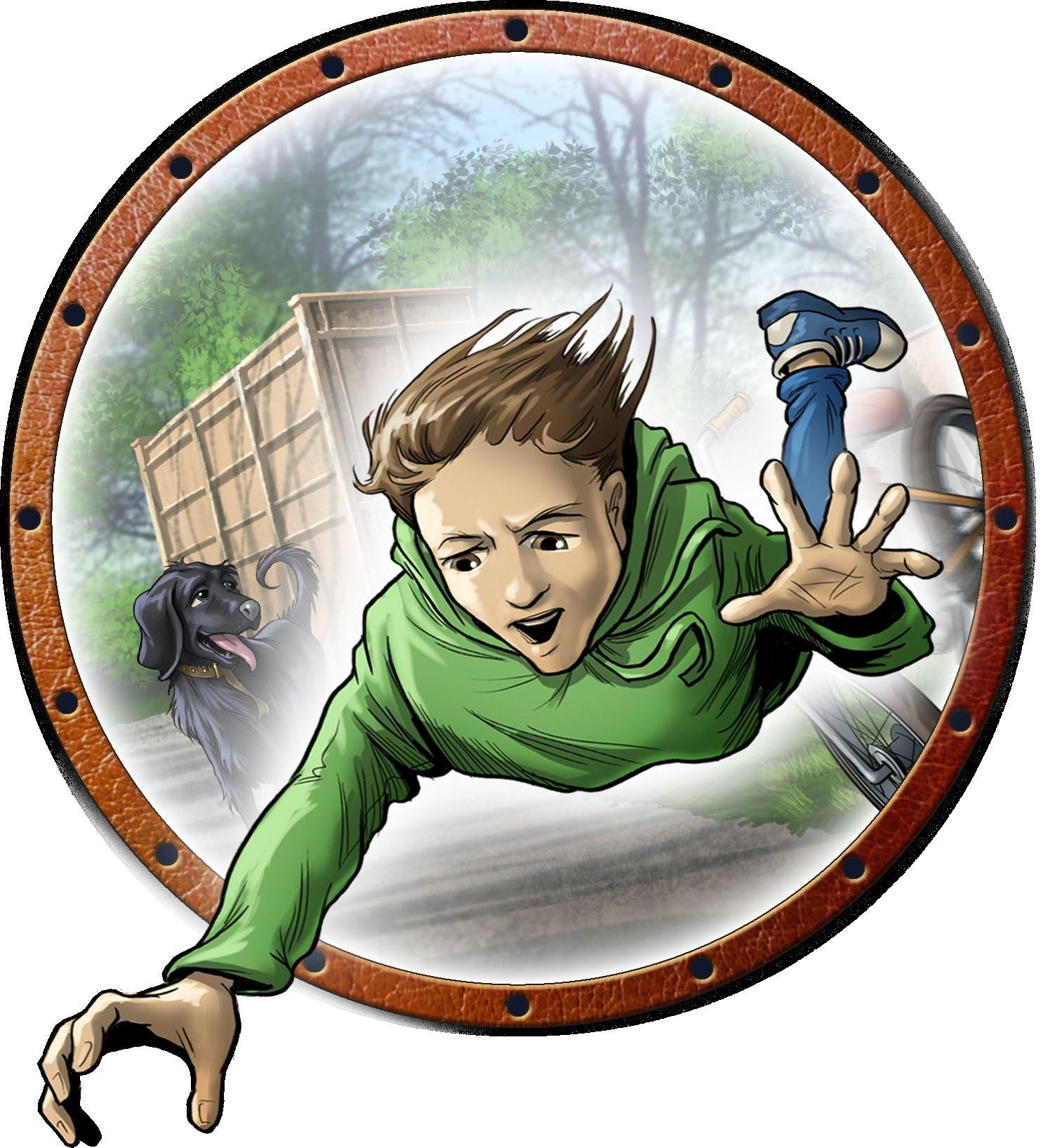
Words at CVC and CVCC level
(C = consonant, V = vowel)
CVC and VCC CVCC
can get box fun top him had yes and end it’s hops sulk limp dent lots vest jump next went ramp dump
Chapter 1: The Ramp Page 1
Chapter 2: Run Page 4
Chapter 3: In the Mud Page 7
Chapter 4: Wag, Wag, Wag! Page 9
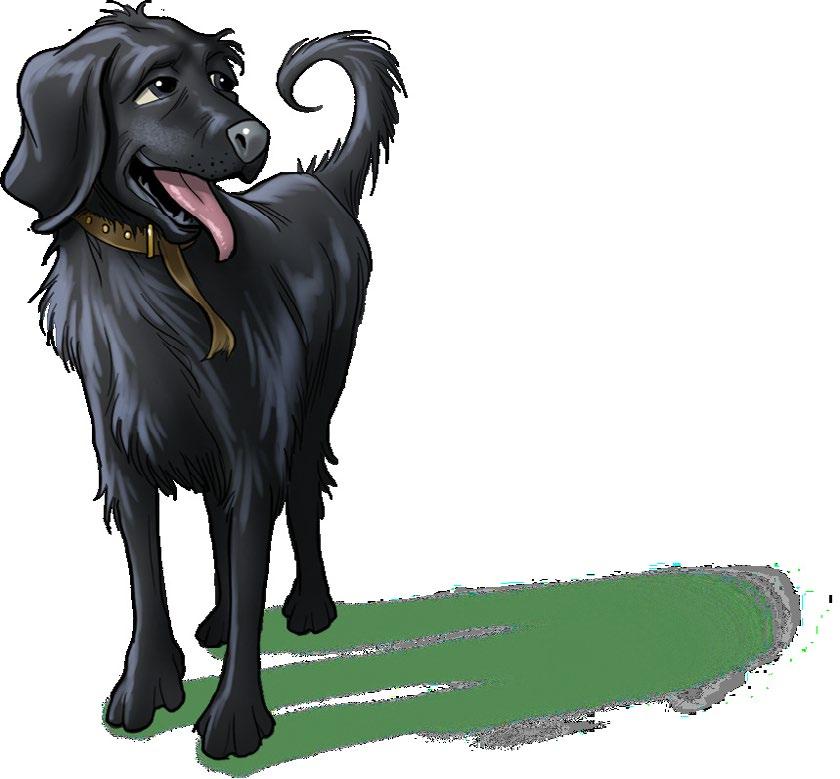
ramp - a sloping surface joining different levels
dump – a place where a large amount of waste is taken dent – a dip in the surface of something, made by a blow yelps – makes a short, sharp cry of pain or alarm
yanks – pulls with a jerk jolts – moves with a sudden lurch sulks – is silent and sad because of disappointment
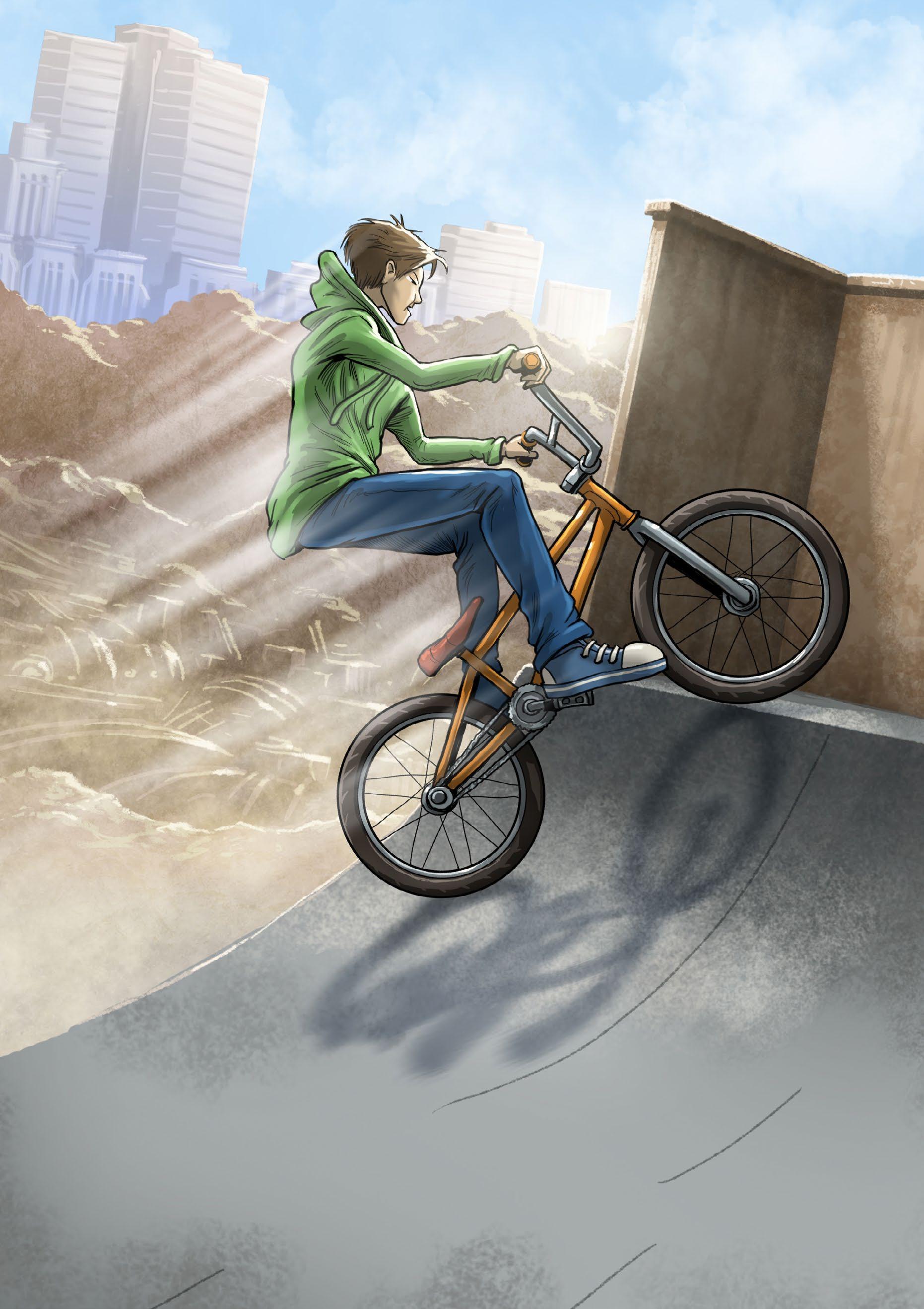
Ben hops on his BMX. He huffs and puffs up the ramp. At the top of the ramp Ben can see the dump.

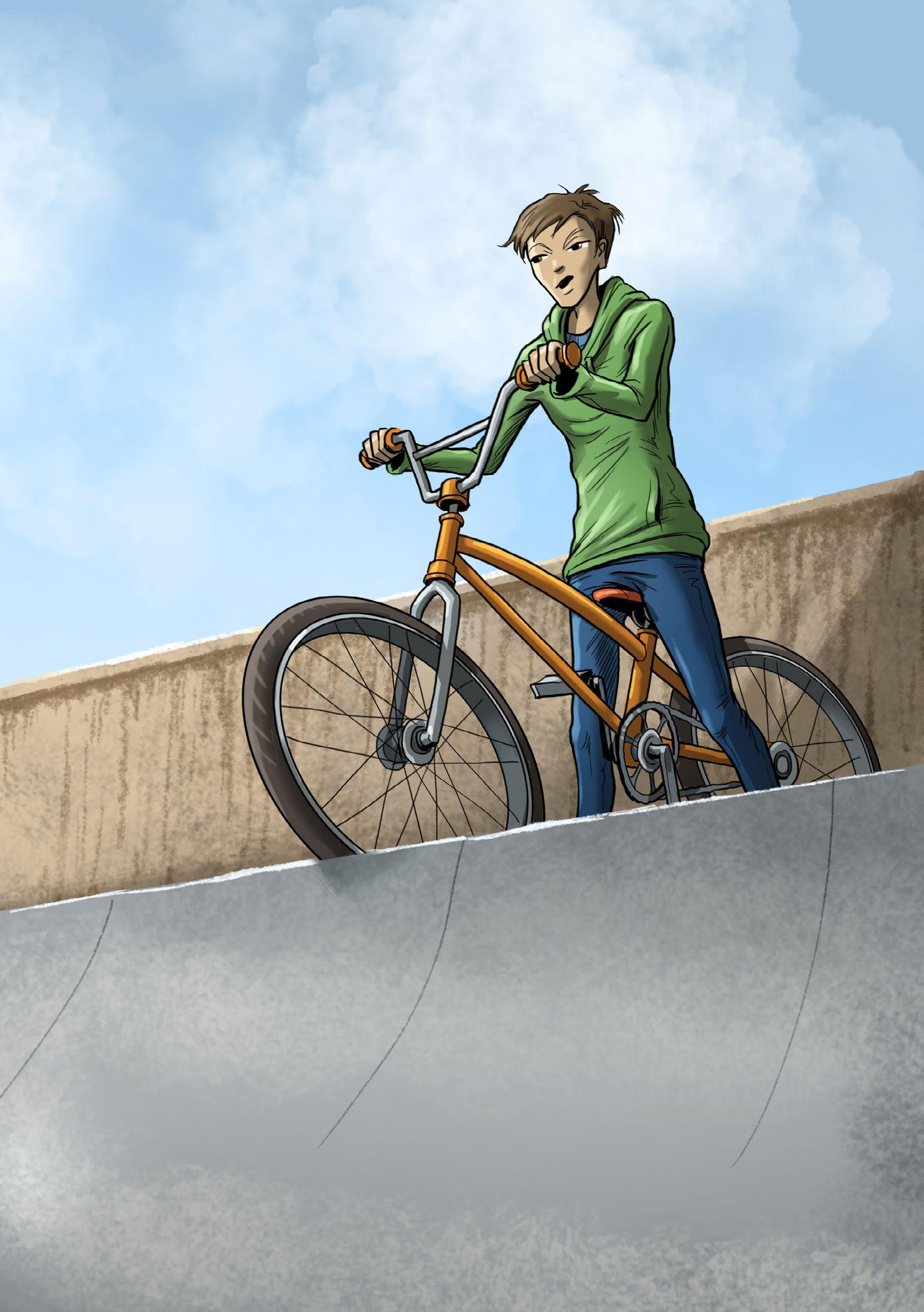
The dump has junk in it: beds, lamps, boxes of stuff and a laptop.
“I can fix that!” says Ben. lap top
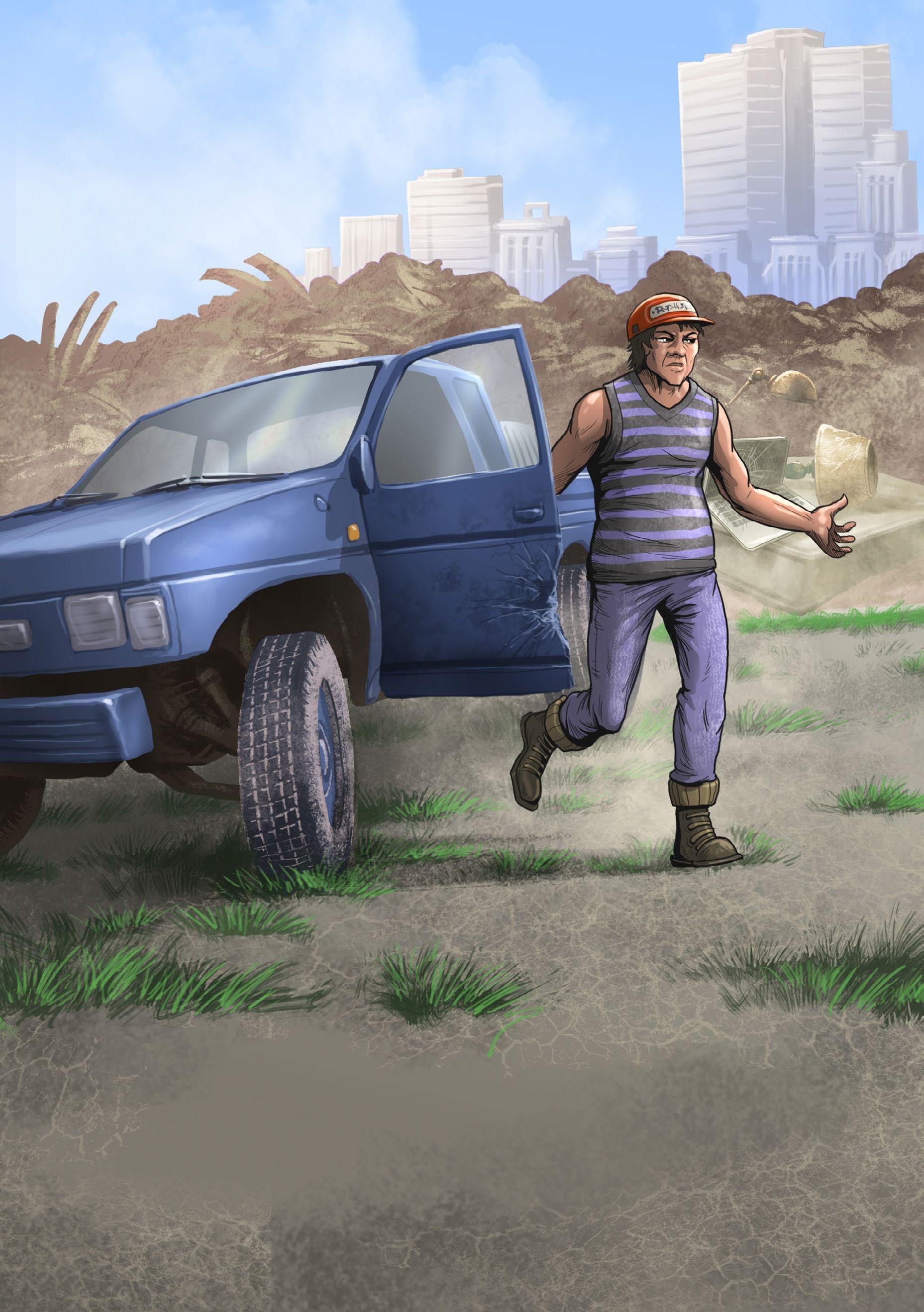
A van stops at the dump. The van has a big dent in it. A man in a vest hops from the van.
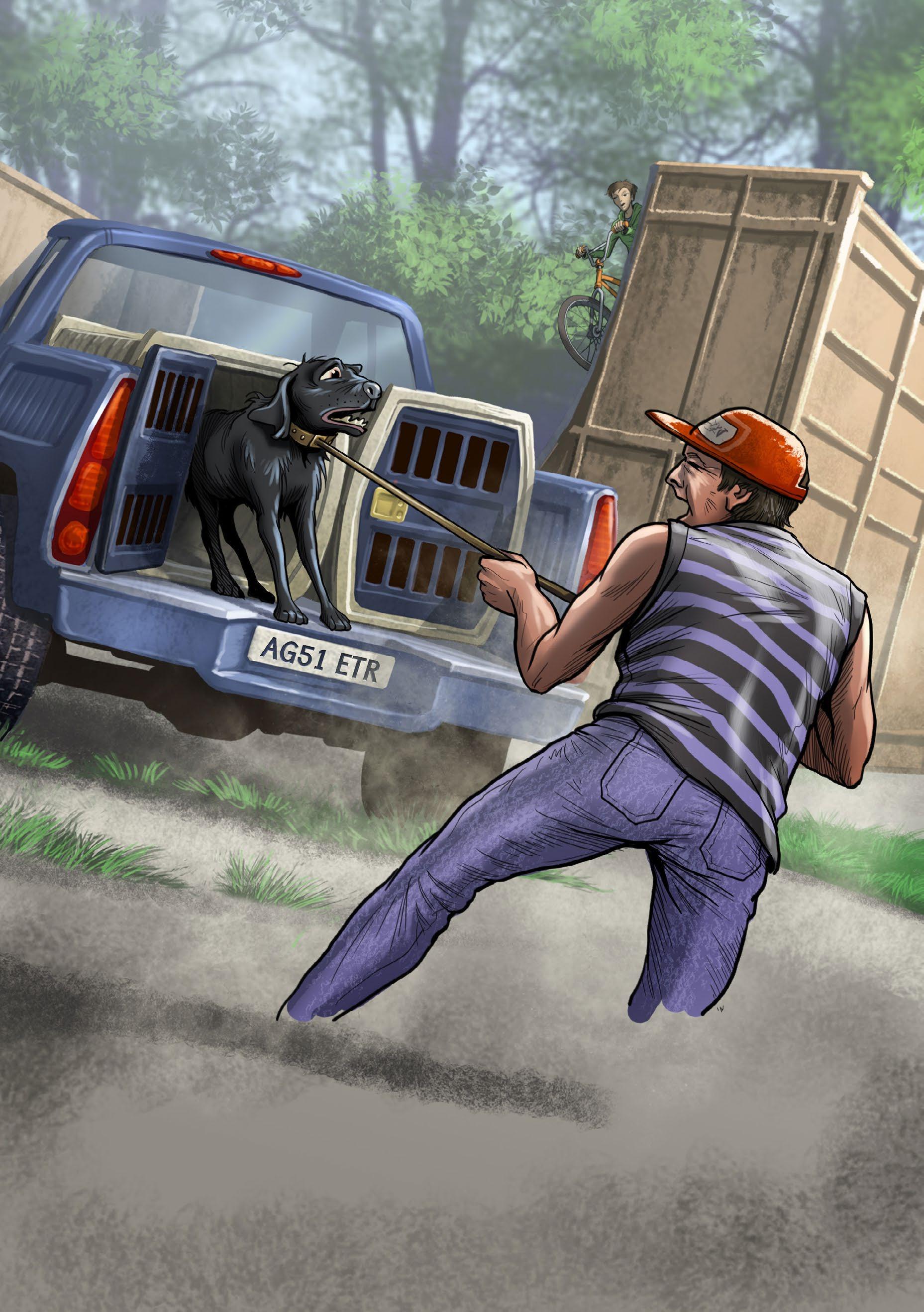
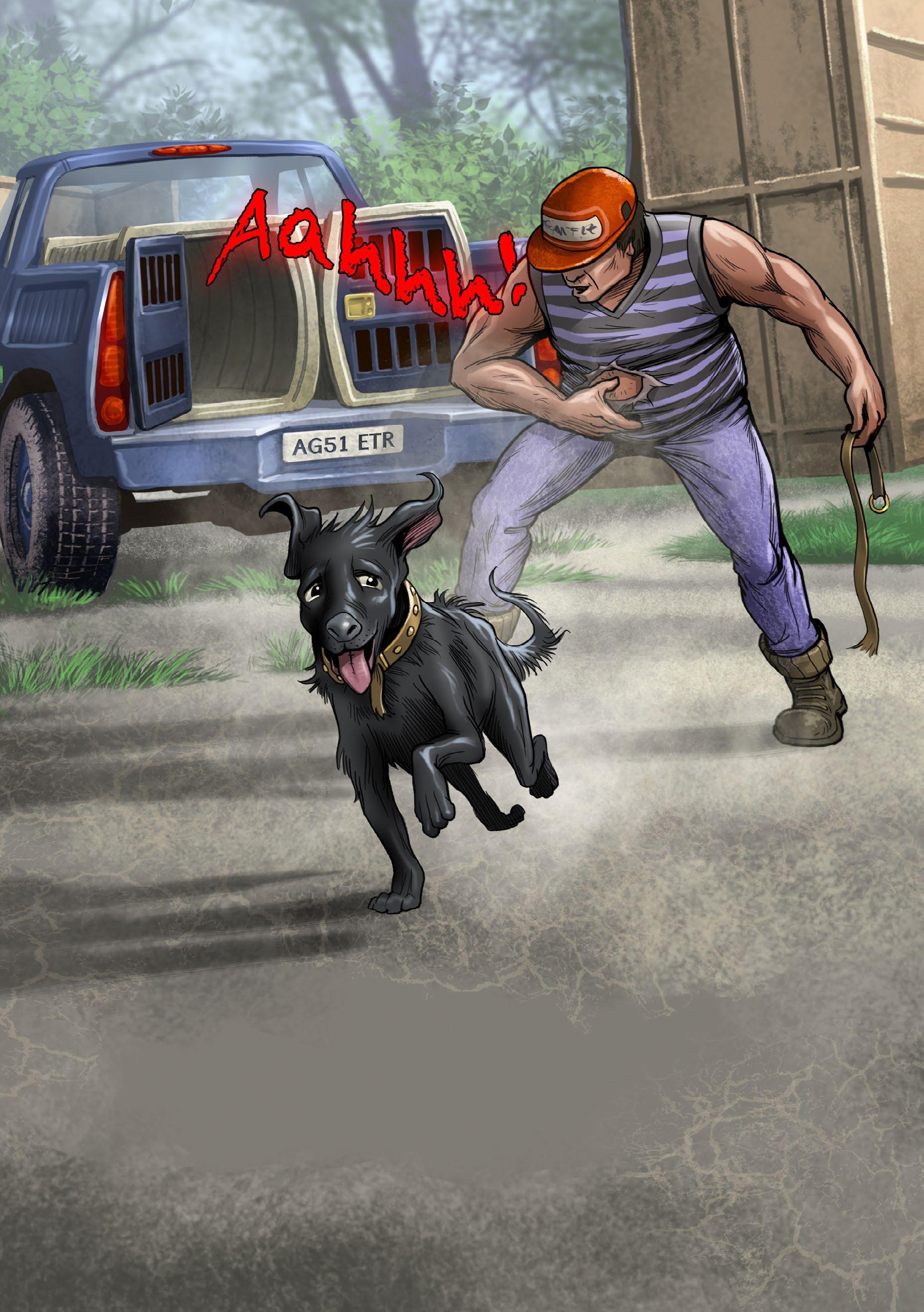
The dog nips the man.
“Aahhh!” the man yells.
He lifts his hand but the dog jumps and runs off. The man sets off in the van.
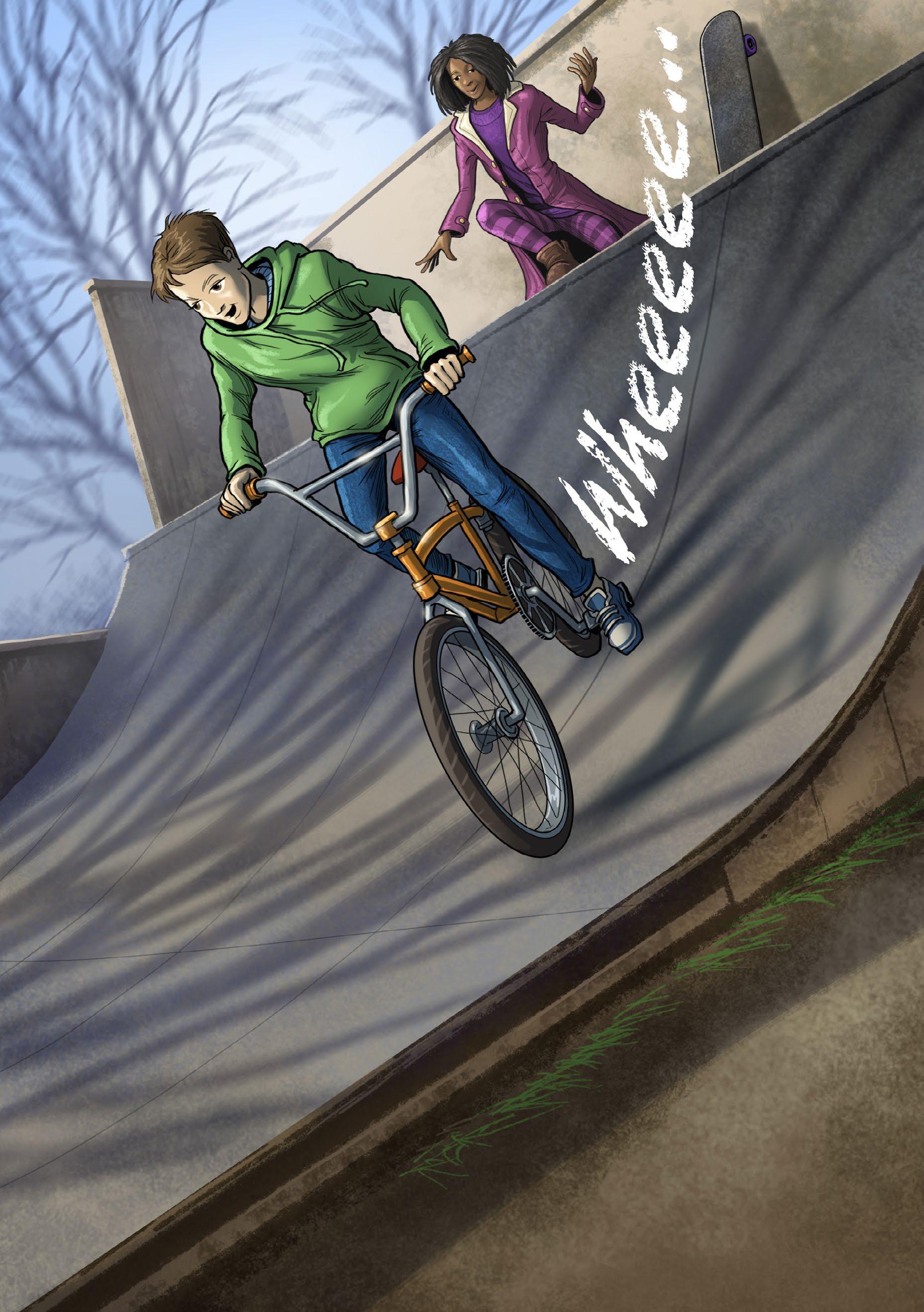
Sal is at the top of the ramp.
“Lift off!” yells Ben.
The BMX is as fast as the wind.
“WHEEE!” Ben yells. The ramp is fun!
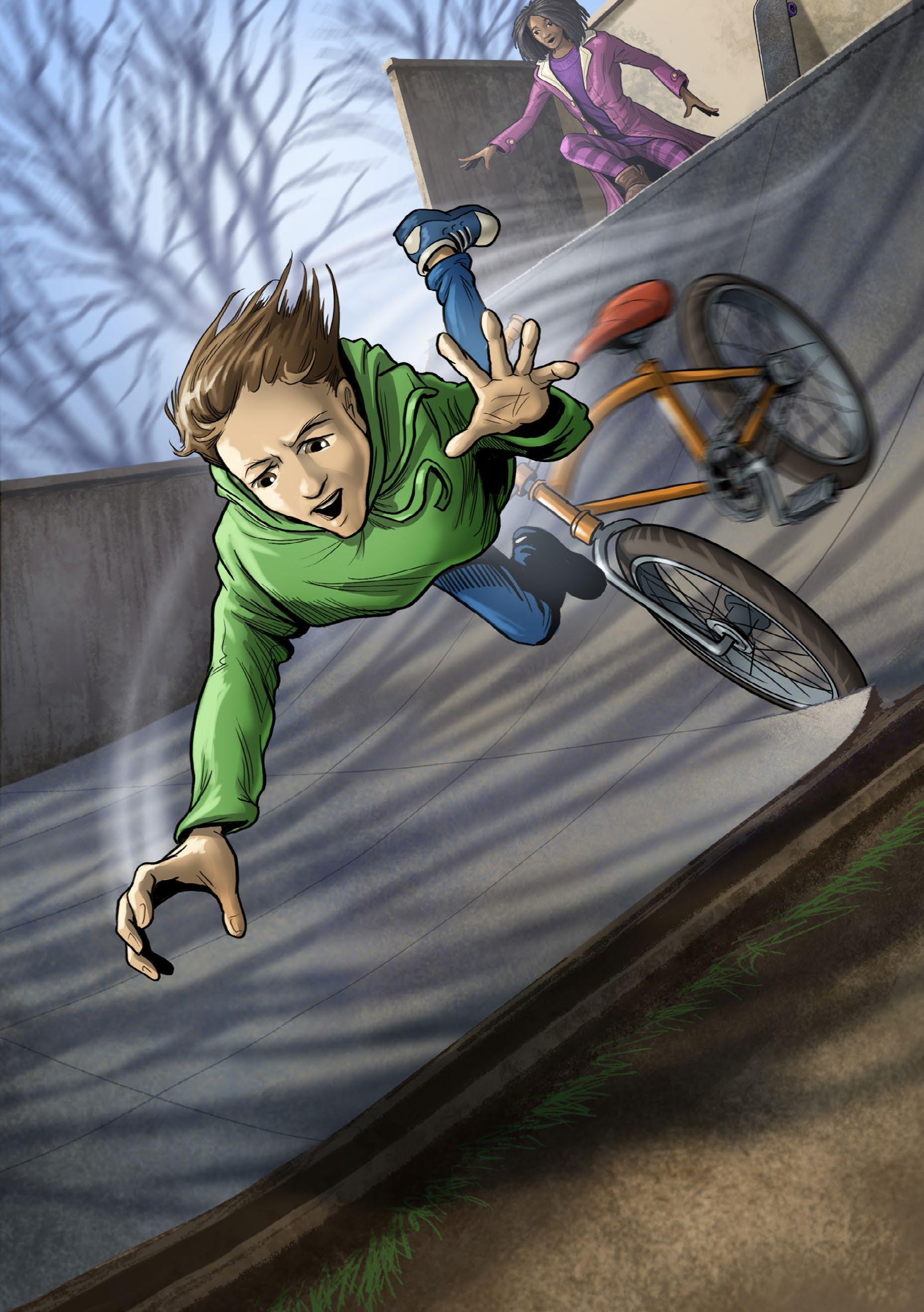
The BMX hits a bump in the ramp.
It jolts. BAM! Ben lands in the mud. He has mud on his hands.
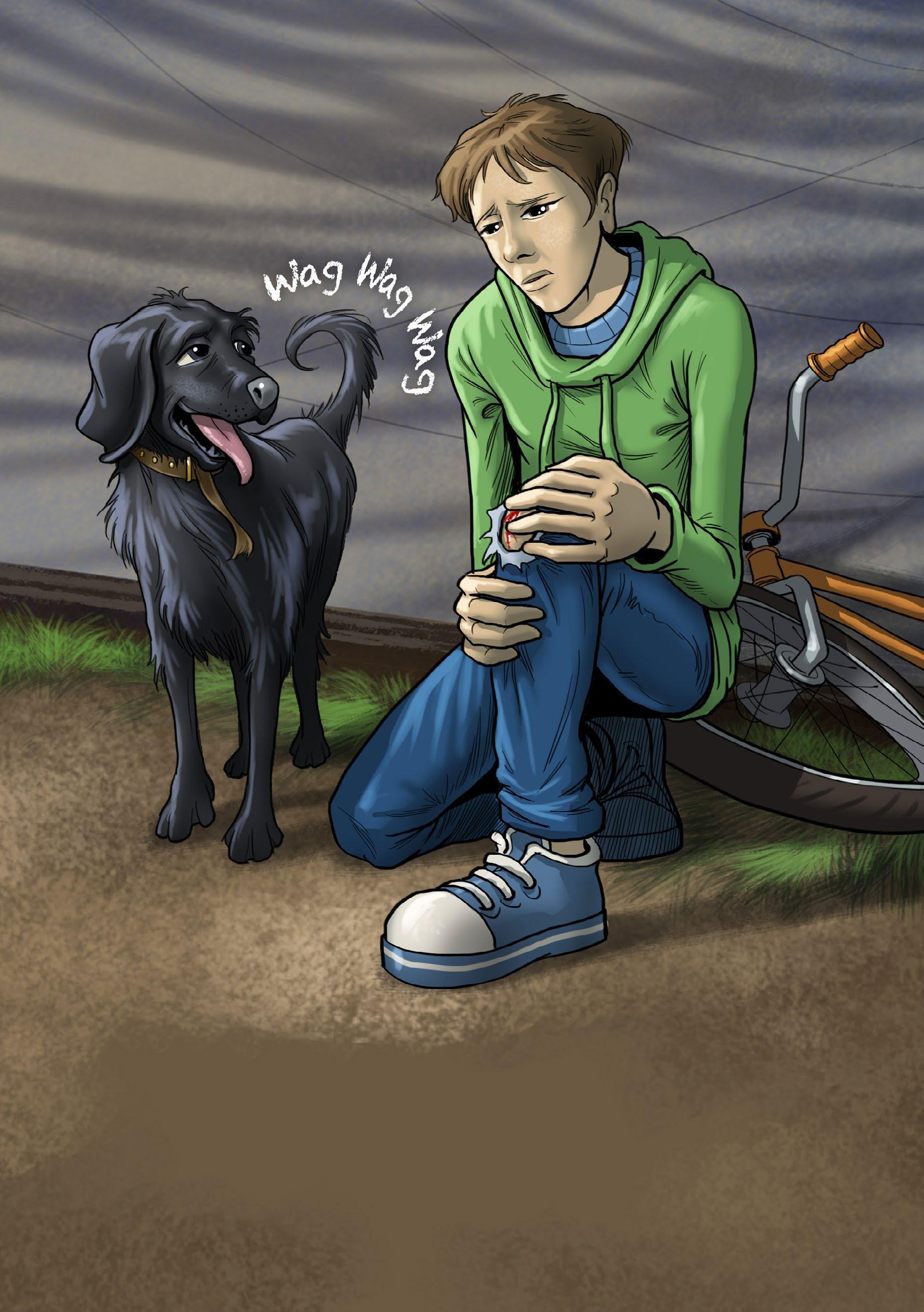
Ben sits up. He has a cut on his leg.
“Ahhh!” The cut is bad. Ben rubs his leg. The dog runs to be next to him.
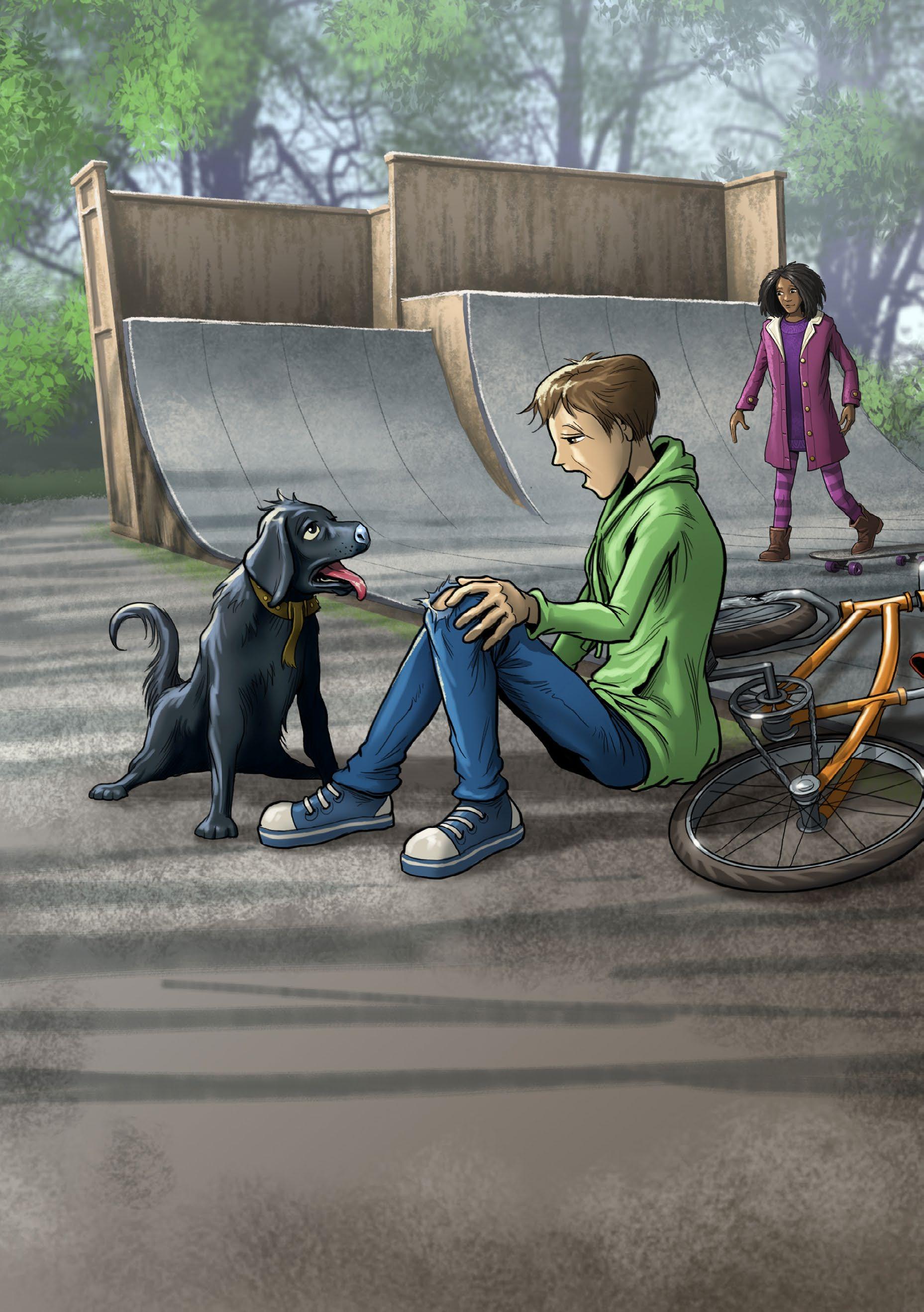
The BMX has a dent. Ben is cross with himself. The dog sits next to him. Wag, wag, wag! him self
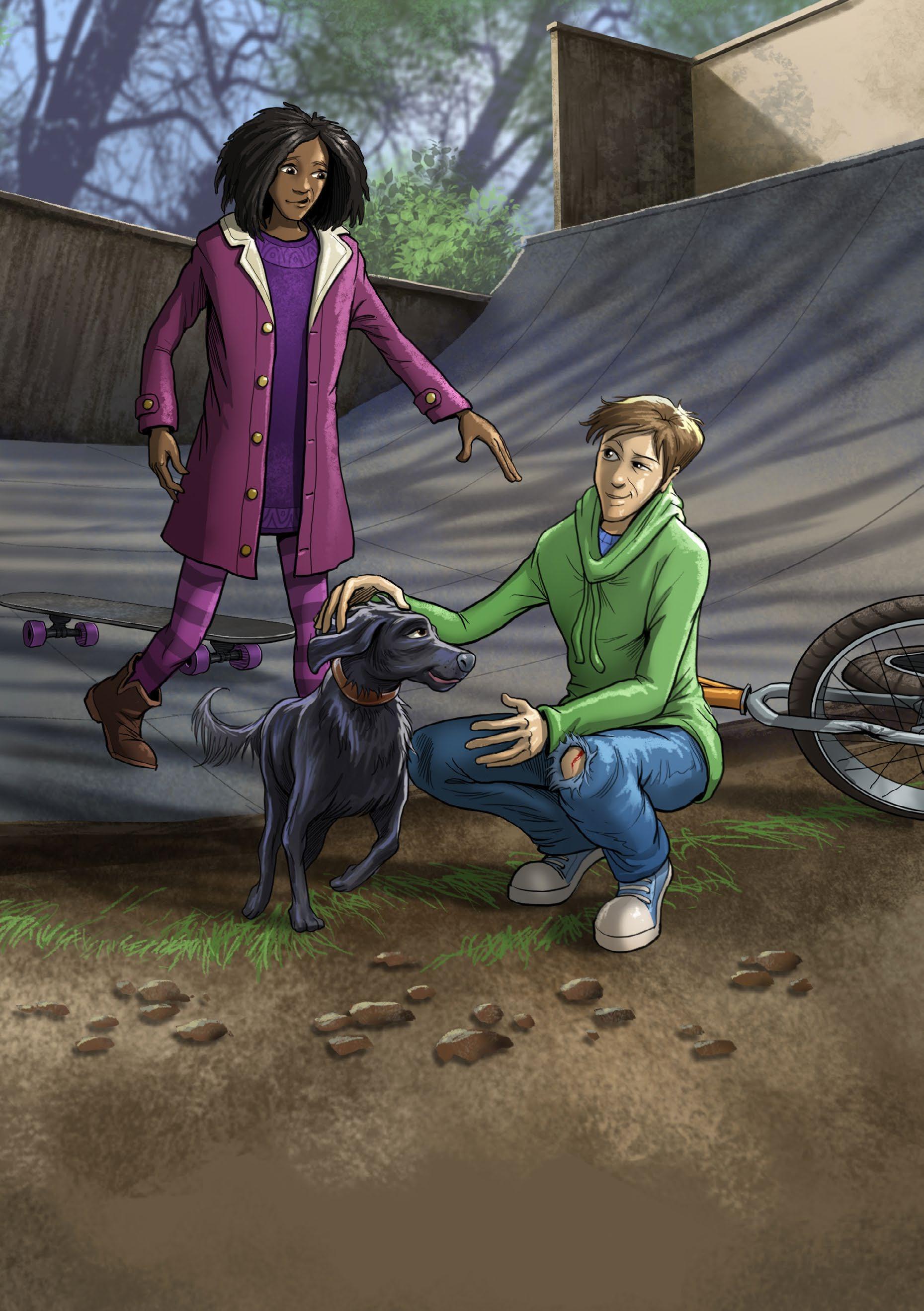
“Is it a bad cut?” asks Sal.
“It’s OK!” Ben says as he pats the dog. He is fond of dogs but his mum is not.
Ben gets up and limps to his BMX. He looks at the dent. He gets the laptop from the dump.
“I’ll test it and mend it,” he says.
lap top

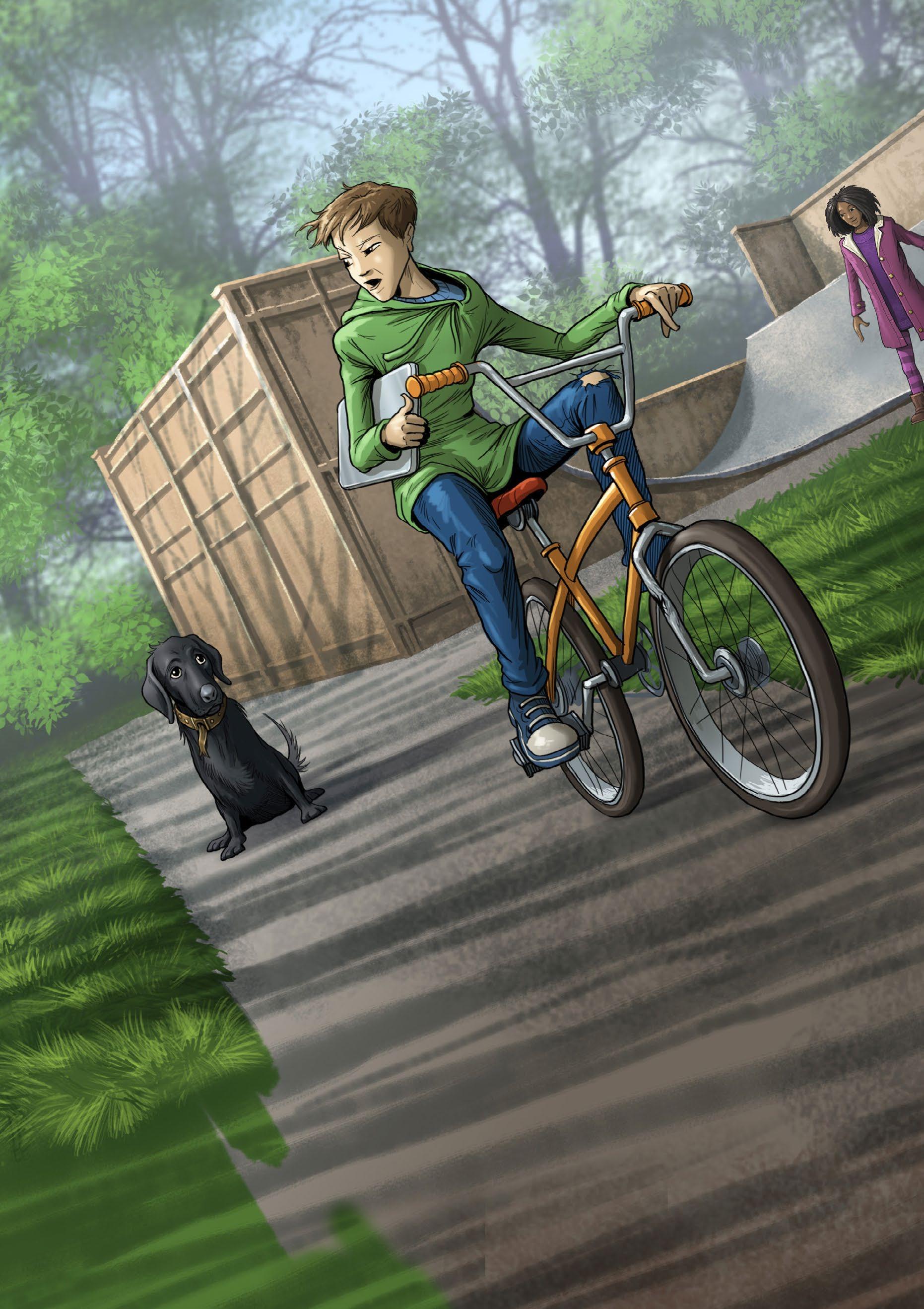
“Mum will not let me have a dog,” Ben tells Sal. He is sad. He gets onto his BMX and sets off. “Sit!” he tells the dog. The dog sits and sulks.

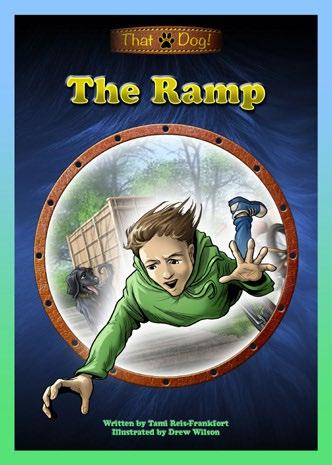
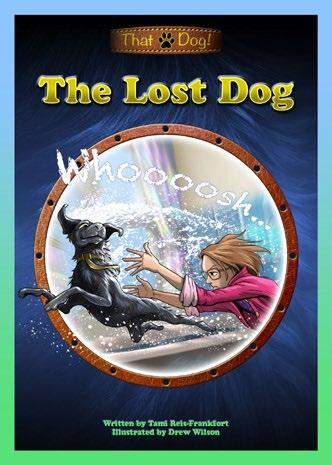
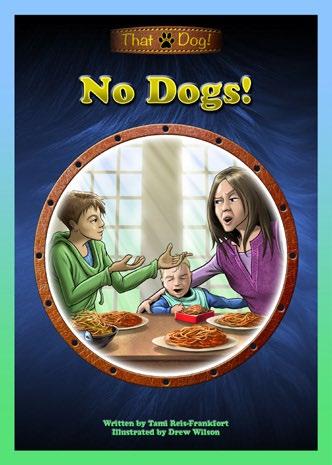
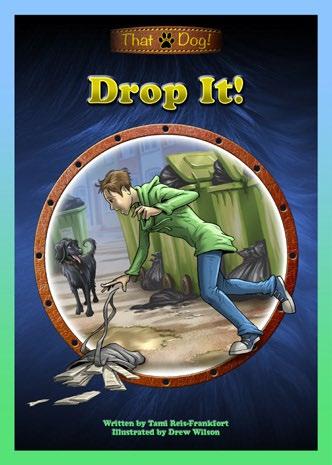
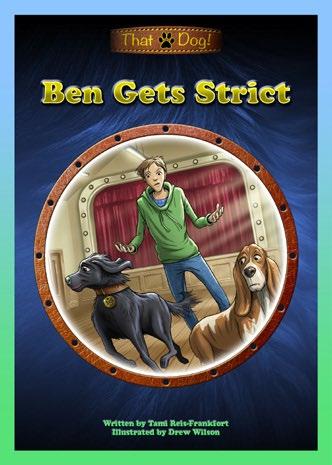
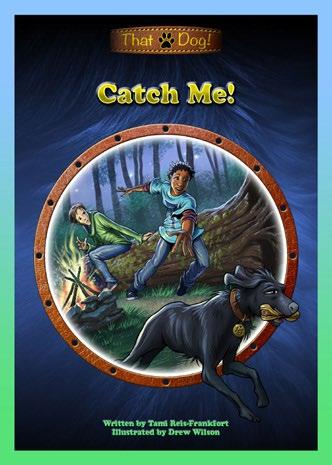
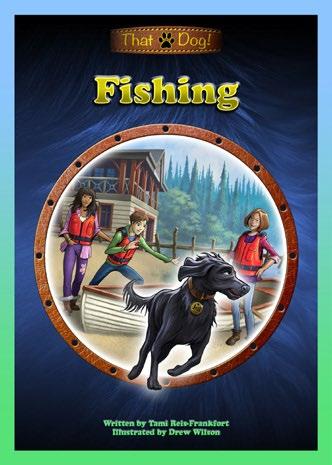
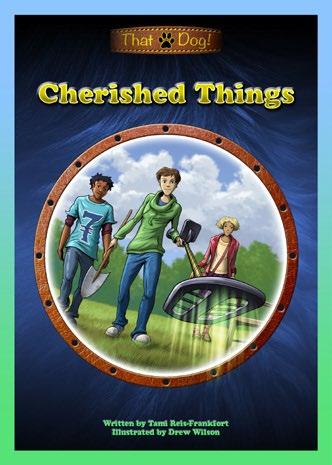
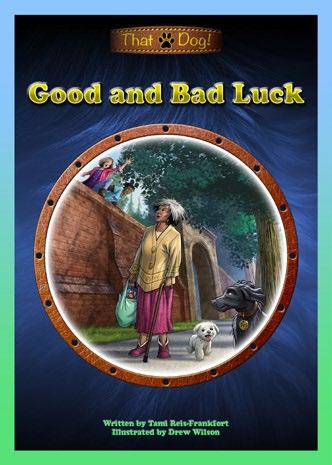
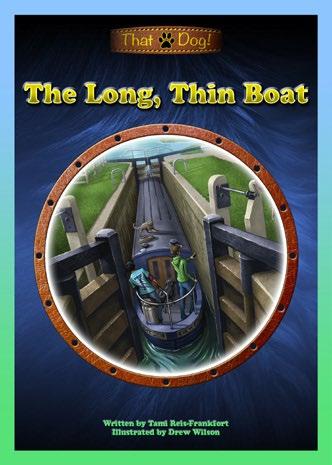
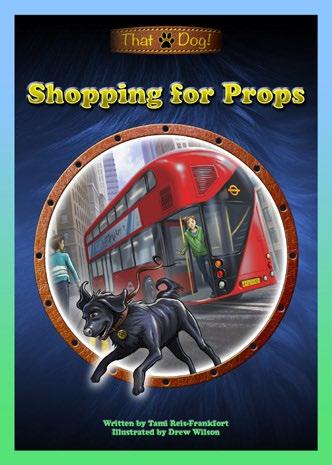
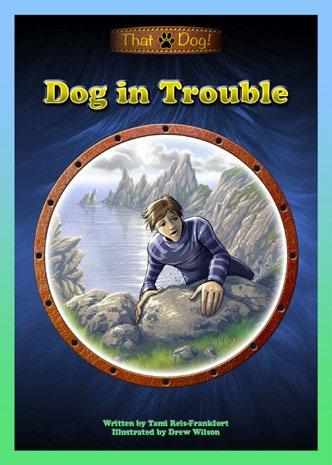


Ben loves animals. Since he was tiny, he always wanted a dog but his mum always said “No!”
One day a scruffy-looking stray follows him home. Ben and his sister, Abi, hide the dog in his bedroom. When Mum finds out, she is livid. “That dog has got to go!” she yells.
Then something happens. Can Ben persuade his mum to change her mind and keep ‘that dog’?
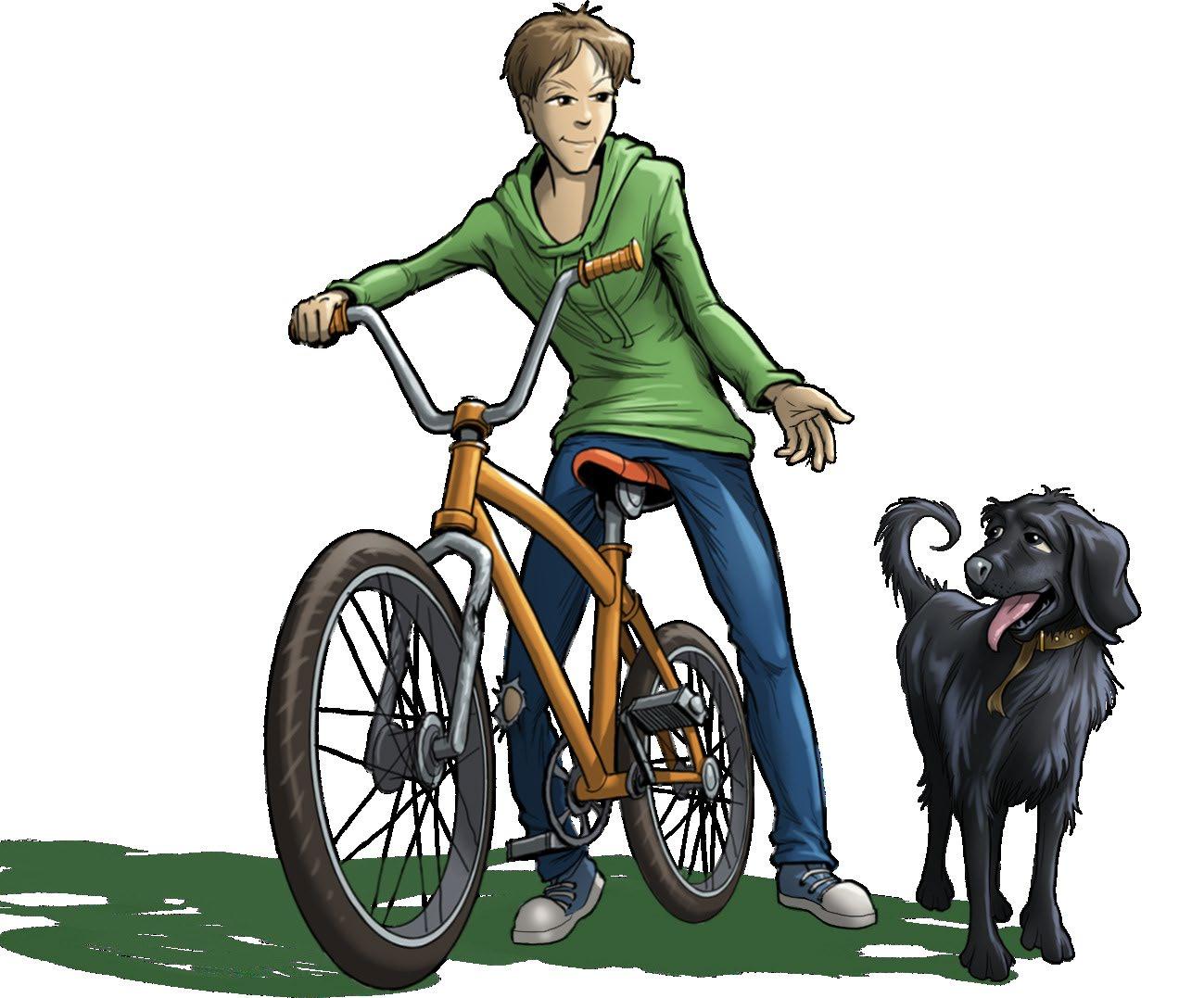


For the curious
PRINTED IN CHINA

info@phonicbooks.co.uk www.phonicbooks.co.uk
a n d
Teaching aims: Segmenting and blending VCC (vowel / consonant / consonant) words with the sounds of the alphabet
How to teach word-building: Choose a word from the list below. Make letter cards for the letters needed to build that word and jumble them up. Draw three lines on a whiteboard. Ask the student to build the word by listening to the sounds in the word and segmenting all the sounds in the word, one at a time. The student places the cards on the line as he/she says the sound. Ask the student to read the word he/she has built. Ask the student to write the word under the lines, saying the sounds as he/she does.
Word list: end, imp, elf, ink, its, opt, ant, alp, act, elm, asp, elk, amp
Book 1: Reading and spelling VCC words and elf its alp elk
Teaching aims: Reading and spelling VCC words
Teaching guidelines: Fold this sheet along the dotted line. Ask the student to read the words on the left and tick the words he/she has read correctly. Ask the student to turn over the sheet and dictate the words to the student. Ask the student to spell the words by segmenting and sounding out the sounds as he/she writes them on the lines. Ask the student to open the sheet and tick the words he/she has spelled correctly.
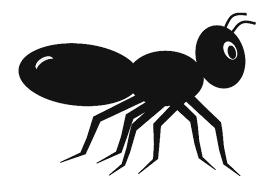
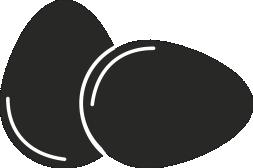



tan ant hat elf elk elm end eggs den pal alp lap asp sap sip opt top pot

Teaching aims: Reading accuracy
Teaching guidelines: Ask the student to read the words in each box and circle the word that matches the picture.
Teaching aims: Practising manipulating sounds in nonsense words
Teaching point: Manipulating sounds in nonsense words is a useful activity for older students as they are required to listen to sounds in words they have not seen before and therefore cannot rely on their visual memory. This develops their ability to segment sounds in words.
Teaching guidelines: Cut out the cards above. Ask the student to build the word ‘ip’, using the cards. Explain they will be building nonsense words. You are going to ask them to change one sound in the word to make a new word. He/she may need to add, take out or change a sound in the word. Ask the student to listen carefully to the new word and change it according to how it sounds. Once the student has built the word, ask him/her to read it. Complete the activity until the student has returned to the original nonsense word ‘ip’.
Book 1: CVC and VCC word reading practice and box get opt ant fun man will amp ban imp ink bed alp elm act ran tell
Teaching aims: Practice of reading CVC and VCC words
Teaching guidelines: Cut out the words above and arrange them so that the student has them stacked in a pile (face down). Ask him/her to turn them over and read them one by one. The student can place the words they can read on the desk and the words they struggle with back at the bottom of the pile to try again.
This sheet may be photocopied by the purchaser. © Phonic Books Ltd 2018


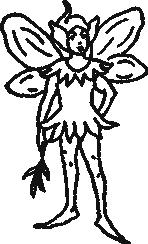

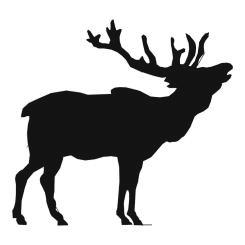

Teaching aims: Reading captions and comprehension
Teaching guidelines: Ask the student to read the captions and draw a line to the matching picture.
Teaching aims: Writing and spelling captions with VC, CVC and VCC words
Teaching guidelines: This activity follows the activity on the previous page. Dictate the captions from the previous page to the student. Ask him/her to listen to the sounds in the words and say them as he/she writes them on the lines.
Book 1: Reading and spelling two-syllable words tab/let up/set nut/meg ban/dit nap/kin mag/net sudd/en muff/in com/bat
Teaching aims: Reading and spelling two-syllable words with VC and CVC syllables
Teaching guidelines: Fold this sheet along the dotted line. Ask the student to read the words on the left and tick the words he/she has read correctly. Ask the student to turn over the sheet and dictate the words to the student. Ask the student to spell the words by segmenting and sounding out the sounds as he/she writes them on the lines. Ask the student to open the sheet and tick the words he/she has spelled correctly.
Book
Chapter 1
1. What can Ben see from the top of the ramp? (page 1)
2. Ben wants to fix something in the dump. What is it? (page 2)
Chapter 2
1. Why does the dog yelp? (page 4)
2. Why does the man bring the dog to the dump? (pages 4 and 5)
Chapter 3
1. Why do you think Ben falls from his bike? (page 7)
2. How does the dog react when Ben falls from his bike? (page 8)
Chapter 4
1. Why do you think Ben is cross with himself? (page 9)
2. ‘Ben is fond of dogs but his mum is not.’ What does that mean? (page 10)
3. What do you think will happen next? (page 12)
Teaching guidelines:
These questions can be discussed after reading the text. They will help develop speaking and listening skills, comprehension and vocabulary.
This sheet may be photocopied by the purchaser. © Phonic Books Ltd 2018
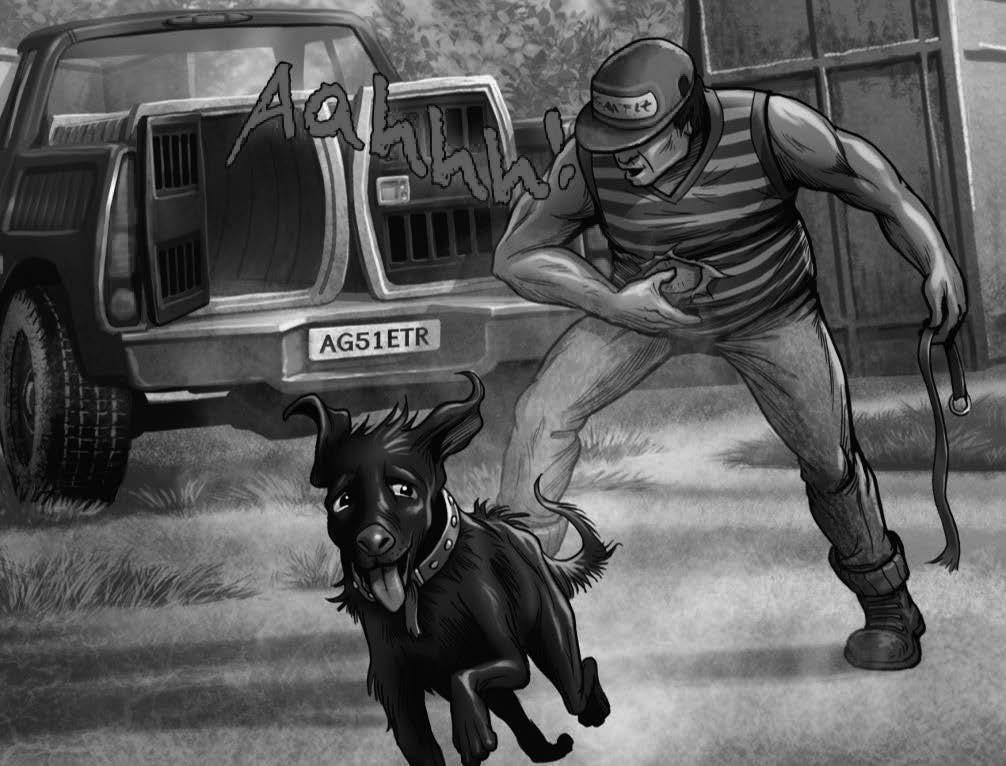
1. Can you spot the ramp? yes no
2. Can you spot the BMX? yes no
3. The man has a vest on. yes no
4. The man has a rip in his vest. yes no
5. The man pat s the dog. yes no
6. The dog sits. yes no
7. The dog runs off. yes no
Teaching guidelines:
This is a comprehension exercise. Ask the student to look at the picture and answer the questions. He/she must then circle the words yes or no. Words the student may need help with: you, spot, the
Ben is on his BMX at the ramp.
A man in a van stops at the ramp.
The man yanks the dog from the pen in the van.
The dog nips the man and runs off.
Ben hits a bump on the ramp and lands in the mud.
Ben gets the laptop from the dump. The dog sits.
Teaching guidelines:
Cut out the sentences above. Ask the student to read the sentences carefully and sequence them in the order of the story in Book 1, ‘The Ramp’. The student then sticks them in the numbered boxes in the correct order. Some students may benefit from sequencing just two sentences at a time.
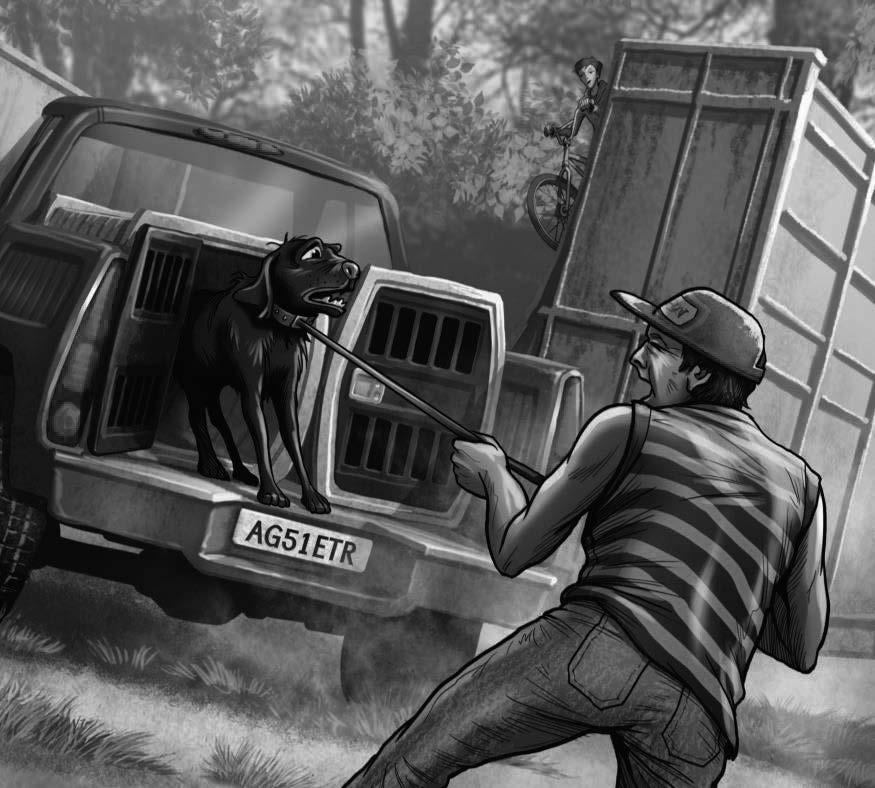
dent dog hand nips
pen van vest yanks
A __ __ __ stops at the dump. The van has a big __ __ __ __ in it. A man in a __ __ __ __ hops from the van. A __ __ __ is in a __ __ __ in the van. The man __ __ __ __ __ the dog. The dog __ __ __ __ the man.
The man lifts his __ __ __ __, but the dog runs off.
Teaching guidelines:
Ask the student to read the text and fill in the missing words. He/she should sound out the words as they write them on the lines. He/she can tick off the words in the boxes above as they use them in the text.
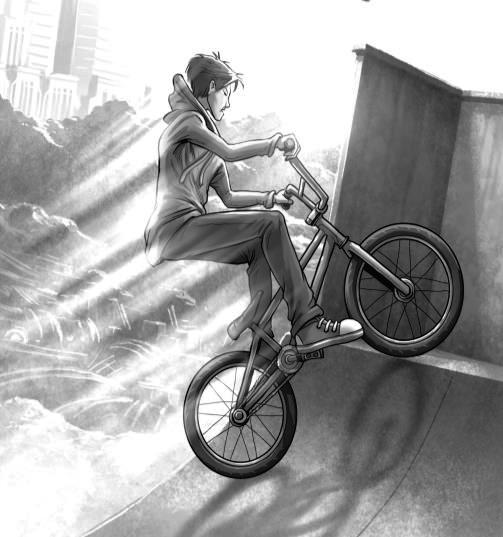
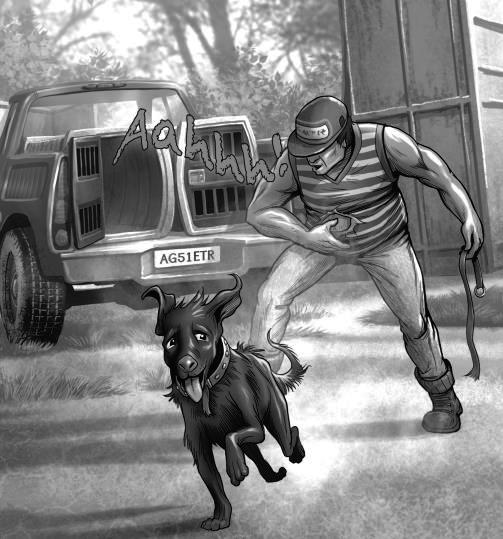
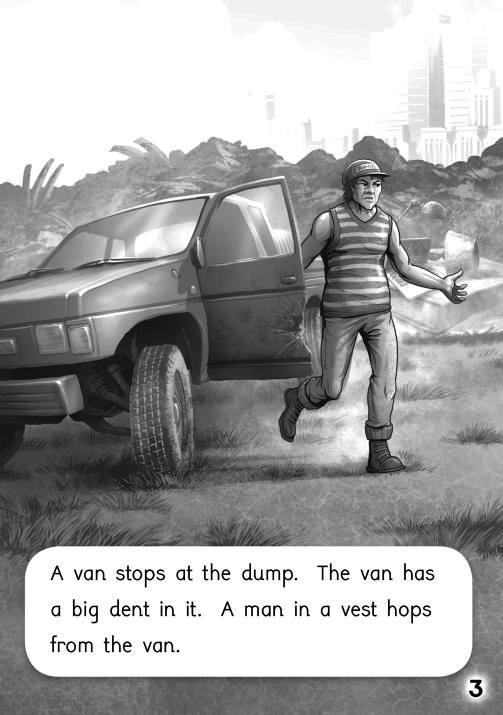
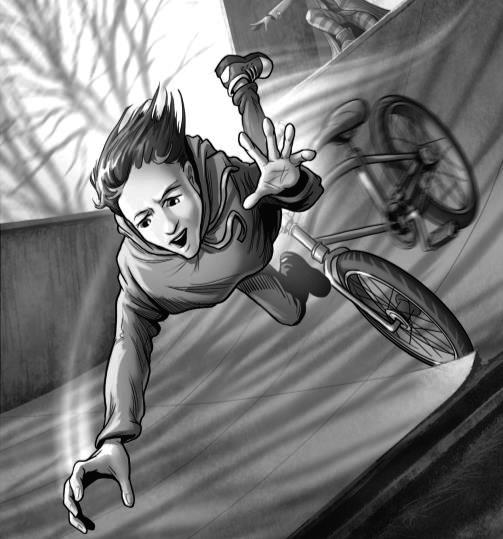
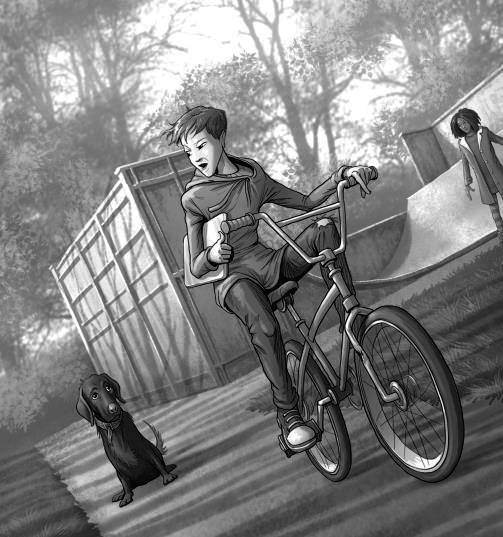
Teaching guidelines: Photocopy the pictures above onto card and cut them out. Jumble them up and ask the student to sequence and number them in the correct order of the story. Ask the student to retell the story in his/her own words. Then ask the student to write his/her favourite part.
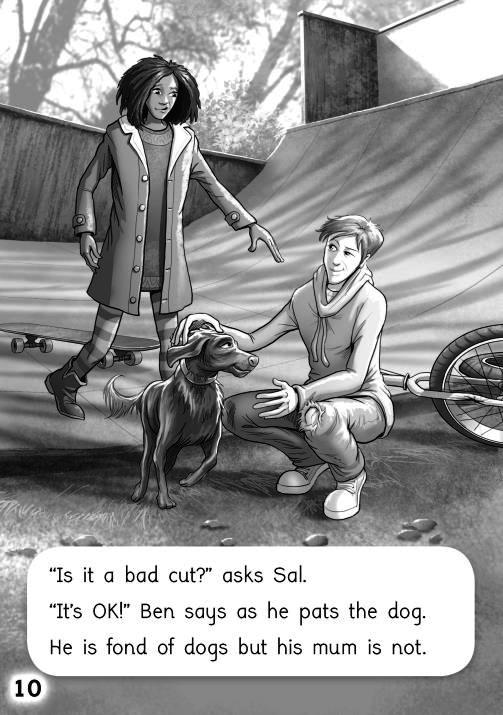
This sheet may be photocopied by the purchaser. © Phonic Books Ltd 2018
New words in Book 1
ramp – a sloping surface joining different levels dump – a place where a large amount of waste is taken dent – a dip in the surface of something, made by a blow yelps – makes a short, sharp cry of pain or alarm yanks – pulls with a jerk sulks – is silent and sad because of disappointment
The dump has and nips the man.
The van has a big up the ramp.
The man yanks and sulks.
The dog yelps junk in it.
Ben sets off. The dog sits dent in it.
Teaching guidelines:
This activity includes new vocabulary introduced in Book 1, ‘The Ramp’. It encourages the student to think about the meaning of the new words and to use them in the context of a complete sentence. Cut the sentences into strips. Ask the student to match the two parts of the sentence so that they make sense. The student may need a reminder of what some words mean.
Book 1: Punctuation
ben gets up and limps to his BMX he looks at the dent he gets the laptop from the dump he will test it and mend it ben gets onto his BMX and sets off the dog sits and sulks
Did you spot?
6 missing full stops
6 missing capital letters
Teaching guidelines: Ask the student to read the text and insert full stops and capital letters where needed. Full stops come at the end of sentences. Capital letters are used to begin sentences and for names.
This
A van stops at the dump. The van has a big dent in it. A man in a vest hops from the van.
A dog is in a pen in the van. The man gets him from the van. The man yanks him. The dog yelps.
The dog nips the man.
“Aahhh!” the man yells. He lifts his hand but the dog jumps and runs off. The man sets off in the van.
Sal is at the top of the ramp.
“Lift off!” yells Ben. The BMX is as fast as the wind.
“WHEEE!” Ben yells. The ramp is fun!
The BMX hits a bump in the ramp. It jolts. BAM!
Ben lands in the mud. He has mud on his hands. Ben sits up. He has a cut on his leg.
“Ahhh!” The cut is bad. Ben rubs his leg. The dog runs to be next to him.
1st reading 1st reading 2nd reading 2nd reading
Teaching guidelines: Fold the sheet on the dotted line. Ask the student to read the first passage twice. The first reading is for fluency. For the second reading, ask the student to read with expression. Put a tick, sticker or stamp in the boxes once this is done. The student can read the second passage on another day or both passages to develop reading stamina.
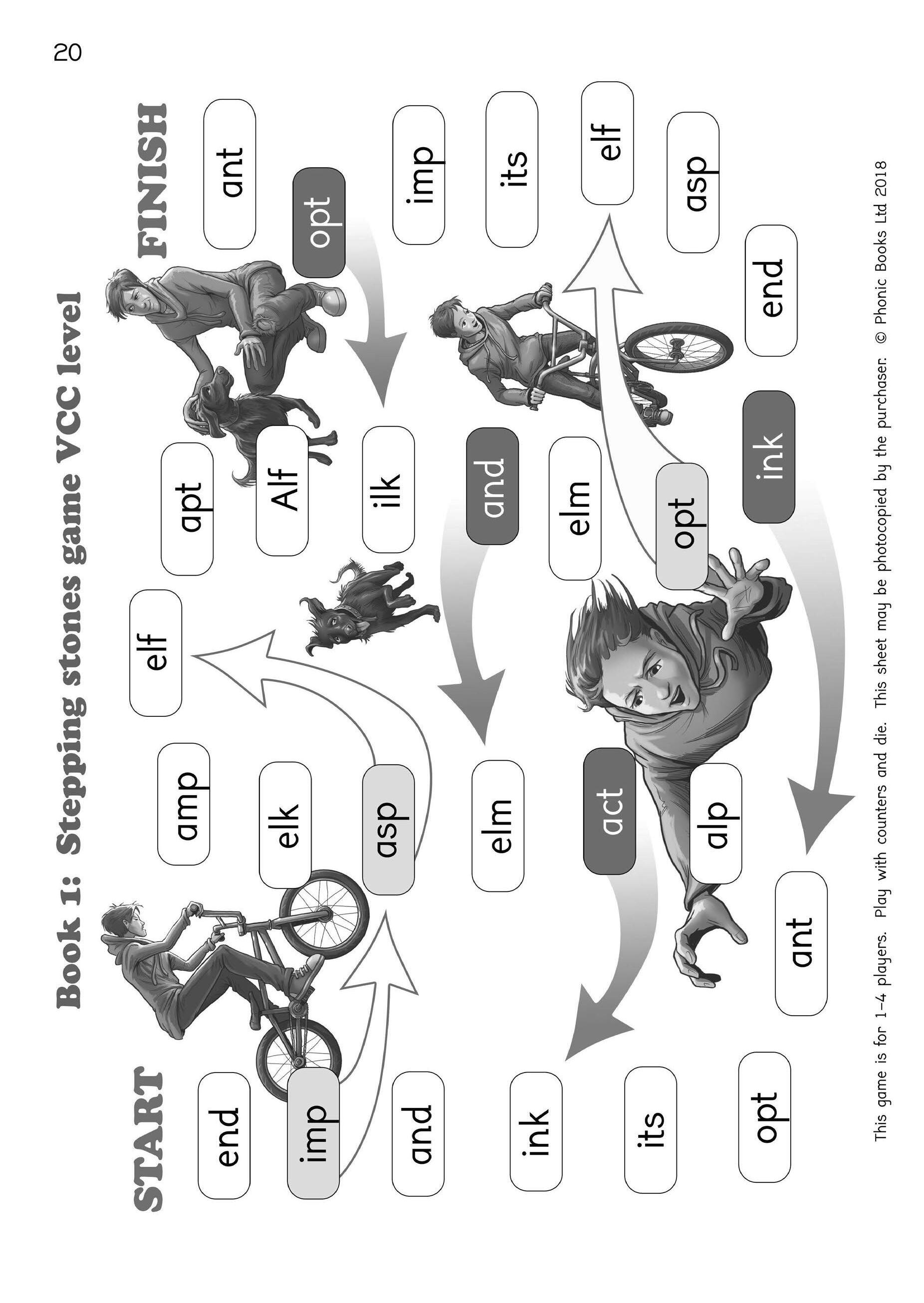
8 to 14






Two
(ai ay; ee ea; oa ow; ur ir; e ea; ow ou; oo ue;


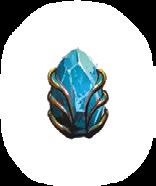

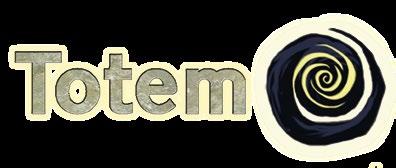









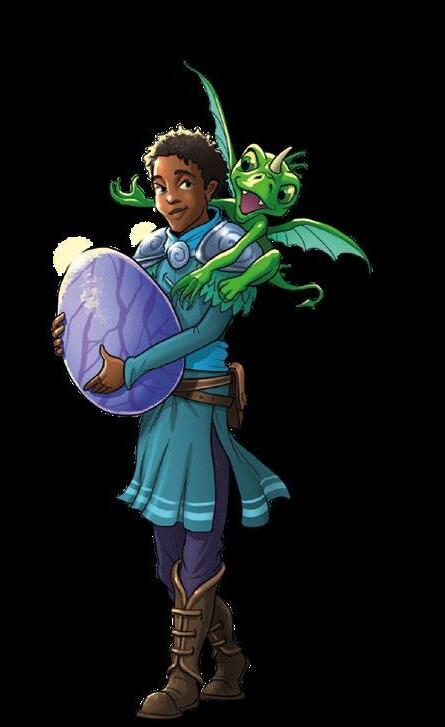




.
